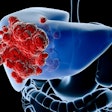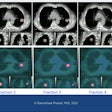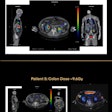The American Society for Radiation Oncology (ASTRO) has released a new guideline that details the use of adjuvant radiation therapy in the treatment of endometrial cancer.
An executive summary of "The Role of Postoperative Radiation Therapy for Endometrial Cancer: An ASTRO Evidence-Based Guideline" is published in the May issue of Practical Radiation Oncology (PRO). It was developed by a panel of 17 gynecologic specialists who compiled and reviewed data from 330 studies from Medline, Embase,and the Specialized Register of the Cochrane Gynaecological Cancer Review Group published from 1980 to 2011 (PRO, May 2014, Vol. 4:3, pp. 137-144).
Included in the guideline are five recommendations:
- No adjuvant radiation therapy is a reasonable option for patients with no residual disease in the hysterectomy specimen despite positive biopsy or grade 1 or 2 cancers with either no invasion or less than 50% myometrial invasion, especially when no other high-risk features are present. Patients with grade 3 cancers without myometrial invasion or grade 1 or 2 cancers with less than 50% myometrial invasion and higher risk factors such as age older than 60 years and/or lymphovascular space invasion could reasonably be treated with or without vaginal cuff brachytherapy.
- Cuff brachytherapy is as effective as pelvic radiation therapy at preventing vaginal recurrence for patients with grade 1 or 2 cancers with 50% or more myometrial invasion, or patients with grade 3 tumors with less 50% myometrial invasion. Vaginal cuff brachytherapy is preferred to pelvic radiation in patients with these risk factors, particularly in patients who have had comprehensive nodal assessment.
- Patients with early-stage endometrial cancer, which is grade 3 with 50% or more myometrial invasion or cervical stroma invasion, are felt to benefit from pelvic radiation to reduce the risk of pelvic recurrence. Patients with grade 1 or 2 tumors with 50% or more myometrial invasion also may benefit from pelvic radiation to reduce pelvic recurrence rates if other risk factors are present, such as age older than 60 years and/or lymphovascular space invasion. For patients with positive nodes or involved uterine serosa, ovaries/fallopian tubes, vagina, bladder, or rectum, the best available evidence suggests that treatment should include external-beam radiation therapy, as well as adjuvant chemotherapy. Chemotherapy or radiation therapy alone may be considered for some patients based on pathologic risk factors for pelvic recurrence.
- Data are lacking to validate the use of brachytherapy after pelvic radiation, and retrospective studies show little conclusive evidence of a benefit, albeit with small patient numbers. Use of vaginal brachytherapy in patients also undergoing pelvic external-beam radiation may not generally be warranted, unless risk factors for vaginal recurrence are present.
- The best available evidence suggests that concurrent chemoradiation followed by adjuvant chemotherapy is indicated for patients with positive nodes or involved uterine serosa, ovaries/fallopian tubes, vagina, bladder, or rectum. Alternative sequencing strategies with external-beam radiation and chemotherapy are also acceptable. Chemotherapy or radiation therapy alone may be considered for some patients based on pathologic risk factors for pelvic recurrence.
The guideline was approved by ASTRO's board of directors in September 2013 and is endorsed by the Society of Gynecologic Oncology, the organization said.



















